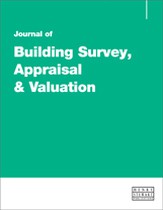Has the Supreme Court moved the goalposts on rights to light?
Abstract
A breach of a party's right to light has historically led to a court injunction preventing or even ordering the pulling down of offending parts of development. However, since the passing of Lord Cairns’ Act in 1858, the courts have had the discretion to award damages instead. A L Smith LJ in his Court of Appeal judgement in Shelfer v City of London Electric Lighting Co [1895] 1 Ch 287 set out what he believed to be a ‘good working rule’ for judges in exercising their discretion. However, this ‘rule’ is now thought to be a shackle and not an aide to judges. The Supreme Court, in the recently reported case Coventry & Others v Lawrence and Another [2014] UKSC 13, has declared the Shelfer rule out of date and has freed judges to decide to grant an injunction or damages in lieu, dependent simply upon the facts and circumstances of the case before them. Will this help or further hinder developers and their advisers? If damages are awarded, what has the Supreme Court had to say about the level of awards made and will the decision mean that the need for a change of law on rights to light as reviewed by the Law Commission is no longer required?
The full article is available to subscribers to the journal.
Author's Biography
Ian Mckenna is a partner at Malcolm Hollis and head of the Rights of Light and Daylight & Sunlight service. He is a specialist in these disciplines with over 15 years’ experience. He acts for both developers and adjoining owners across the UK to identify issues, manage modelling and testing processes, provide remedial advice and negotiate commercial resolutions. He lectures widely on the subject and represented the BPF during its consultation with the Law Commission on rights of light law reform.
Citation
Mckenna, Ian (2014, November 1). Has the Supreme Court moved the goalposts on rights to light?. In the Journal of Building Survey, Appraisal & Valuation, Volume 3, Issue 3. https://doi.org/10.69554/WWOA3621.Publications LLP
